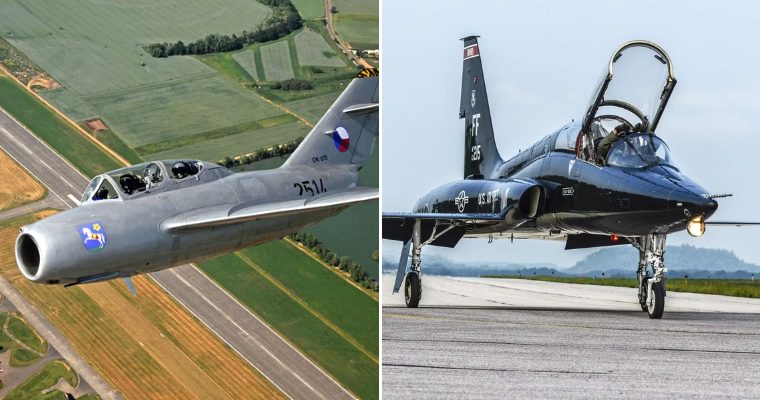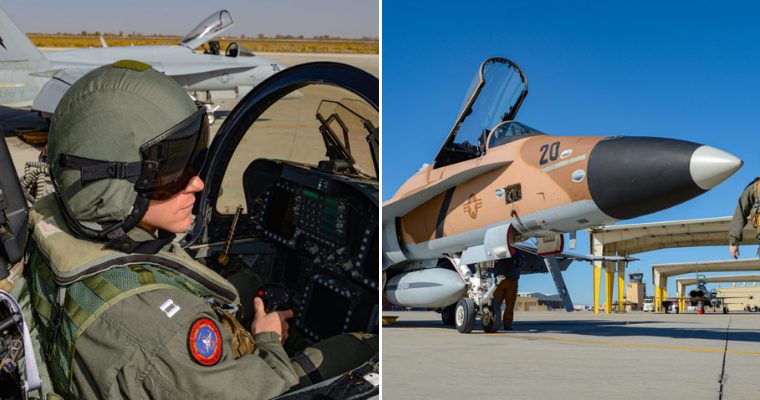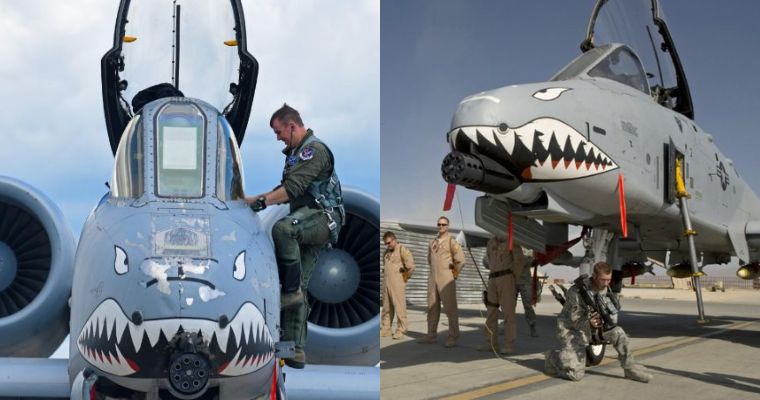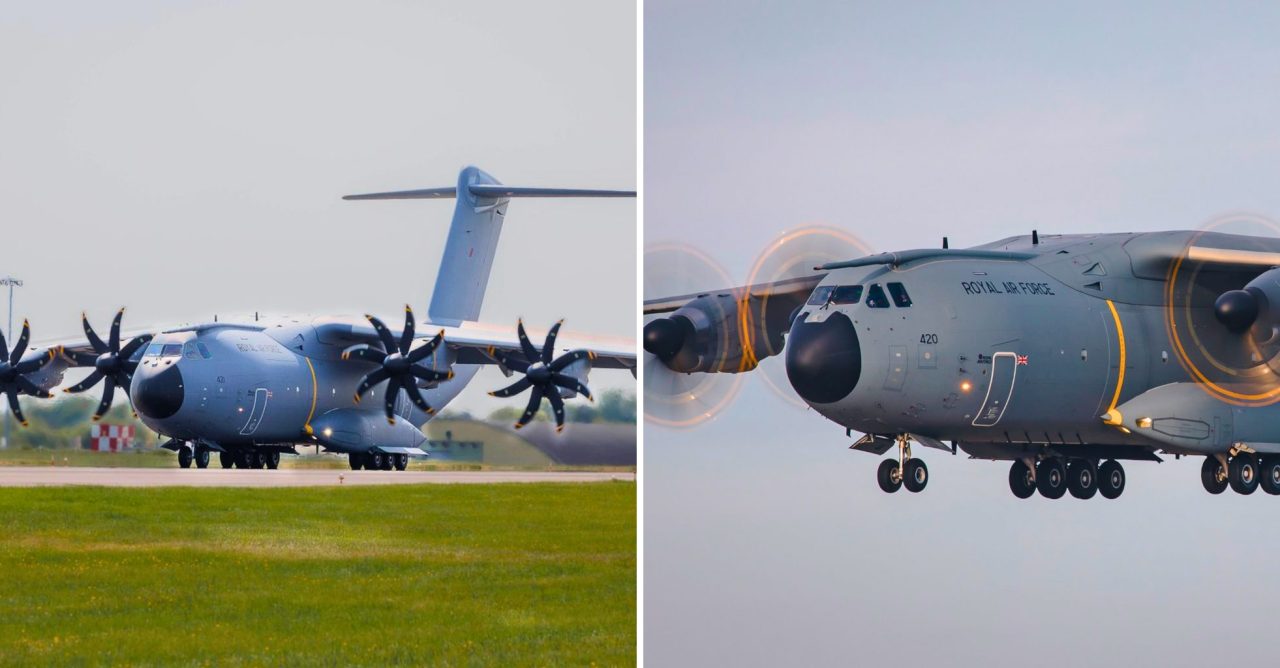We are continually on the hunt for fresh information regarding the highly elusive stealthy Black Hawk helicopters used by the U.S. military, one of which famously crashed during the mission that resulted in the death of Osama Bin Laden in 2011.
Now, what looks to be a previously unreleased photo of a significantly modified EH-60 electronic warfare and signals intelligence derivative of the Black Hawk has come to our attention. It appears to represent, at the very least, one of the gaps between the distinctive Black Hawk helicopters used in the Bin Laden operation and stealthy Black Hawk design ideas from the 1970s.

According to what we understand, the image in question, which can be seen at the top of this article and again below in a somewhat enlarged manner, is related to Fort Eustis in Virginia. Felker Army Airfield at Fort Eustis is home to the 128th Aviation Brigade, formerly the U.S. Army Aviation Logistics School, as well as the Aviation Technology Office, formerly known as the Flight Concepts Division (FCD) (ATO). It is believed that this unit oversaw the creation of several of the most cutting-edge and top-secret rotary-wing capabilities in the U.S. Army, including the stealth Black Hawks utilized in the Bin Laden operation.
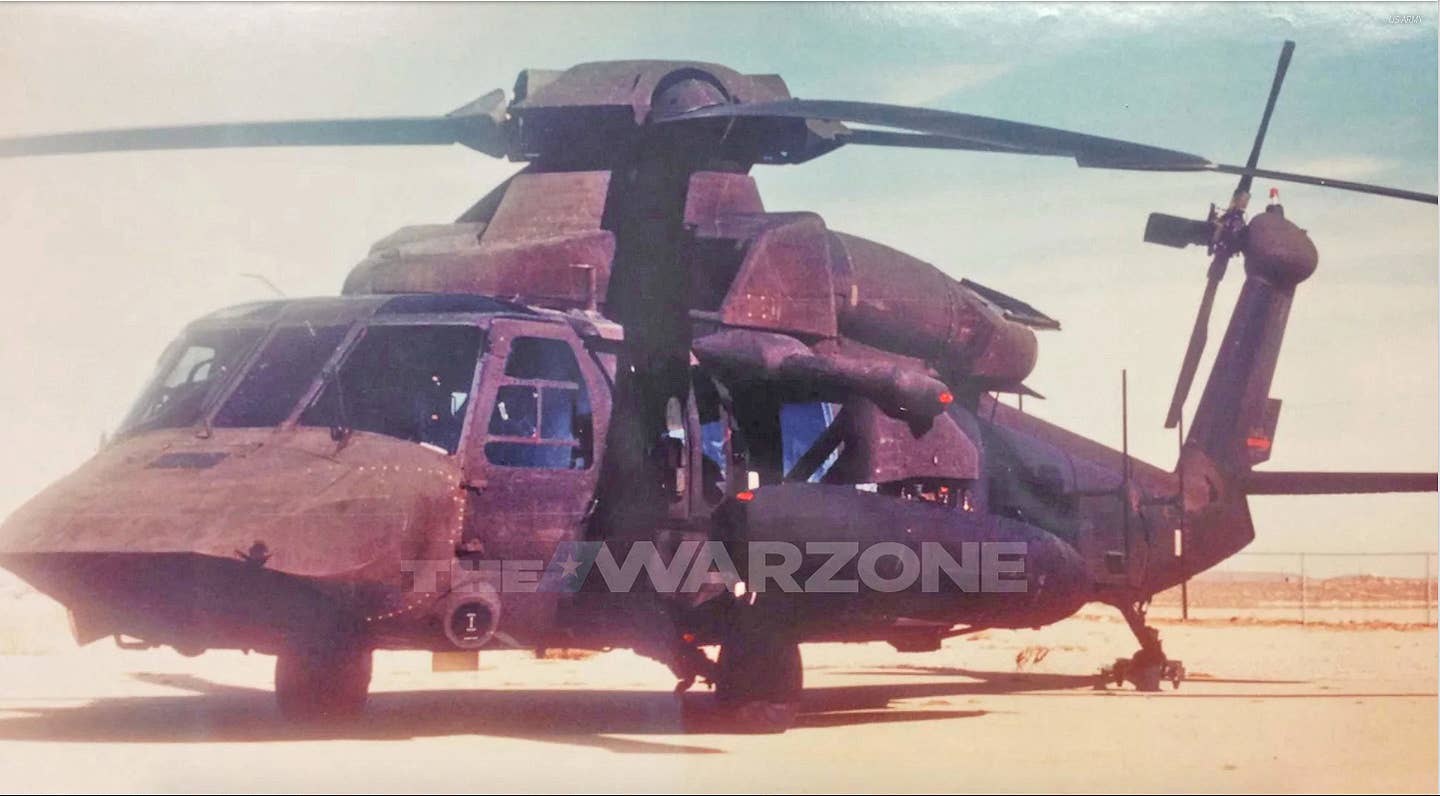
The picture is undated and we have no immediate information about any program or programs the helicopter might have been associated with. The location where it was taken is also unknown, but is a desert locale that could indicate it was shot somewhere in the American southwest, which is home to a number of aviation test facilities, including top-secret air bases, such as Area 51 and the Tonopah Test Range Airport. The stealthy Black Hawks used in the Bin Laden raid were housed at the former, according to reports.
The Bin Laden raid Black Hawks were said to be based on the special operations MH-60 airframe. However, the helicopter seen in the photo is clearly a heavily modified Sikorsky EH-60 variant, though it’s not clear if it is an EH-60A or EH-60L version. Both of these helicopters carried versions of the AN/ALQ-151 Quick Fix system, which was capable of both intercepting hostile electronic emissions and providing direction-finding information to locate the source, as well as electronic warfare jamming. The EH-60A carried the AN/ALQ-151(V)2 Quick Fix II system, while the EH-60L was equipped with the more capable AN/ALQ-151(V)3 Advanced Quick Fix suite.
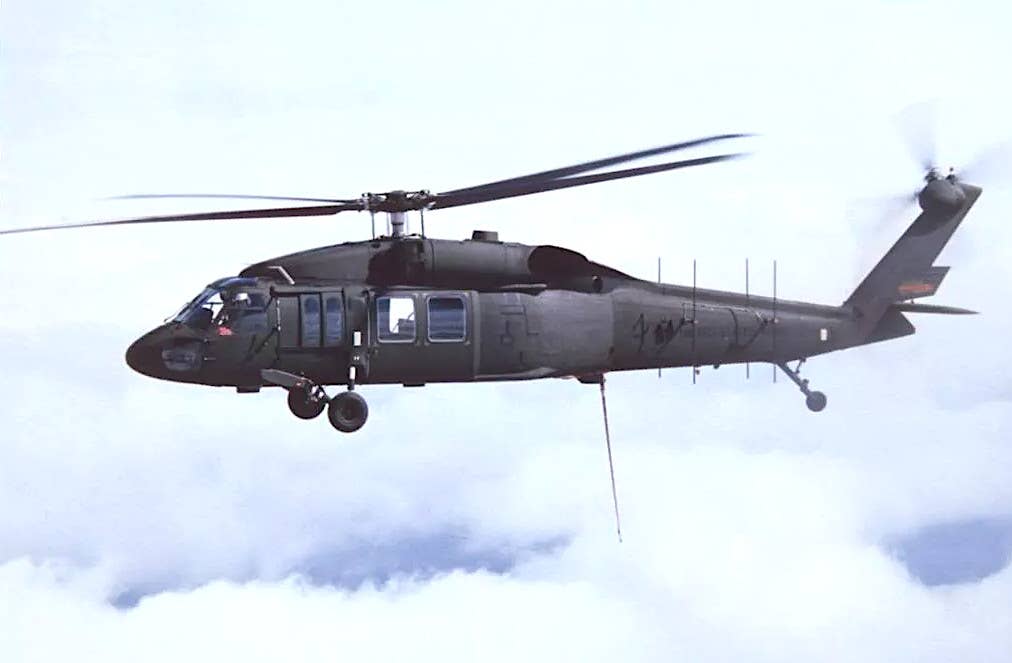
The helicopter’s most notable features are, of course, the extreme modifications to the nose, the “doghouse” where the engines and main gearbox are situated, as well as the engine intakes and exhausts. It also has a heavily modified rotor hub. All of these features appear to be designed to reduce its radar signature, especially from the critical forward hemisphere aspect.
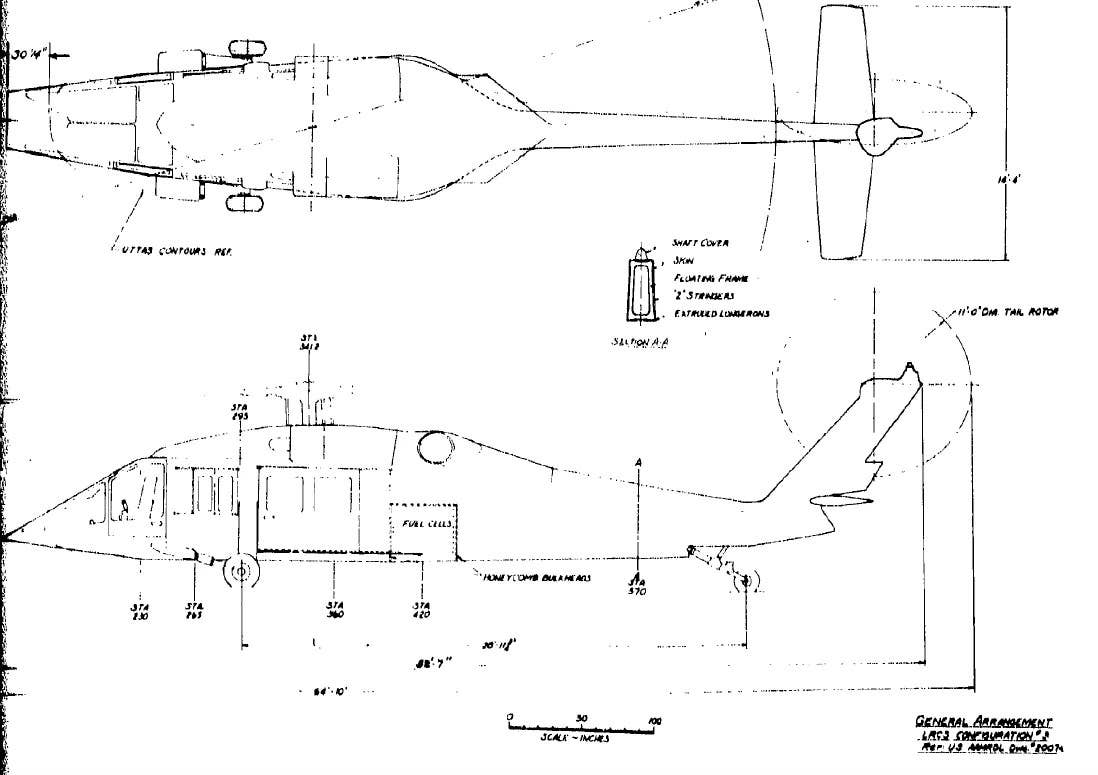
It’s also worth noting that the modified engine intakes on this Black Hawk appear to help conceal the fan faces of its two turbine engines and dramatically clean up the area around the engine nacelles and forward doghouse area. These are all features that traditionally have a high degree of radar reflectivity.
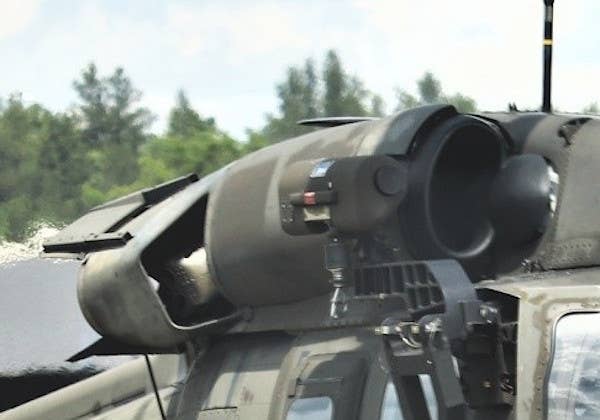
Unlike the helicopters used in the Bin Laden raid, this particular example has no modifications to its tail rotor, which would have negatively impacted its all-aspect radar reflectivity and especially its acoustic signature. However, the radar reflectivity of the helicopter’s front aspect would have been the most pressing concern when it comes to RF stealth, especially when penetrating into heavily defended areas. We also don’t know whether additional stealthy add-ons, especially for the tail, were developed later for this project or were otherwise not fitted in this particular instance.
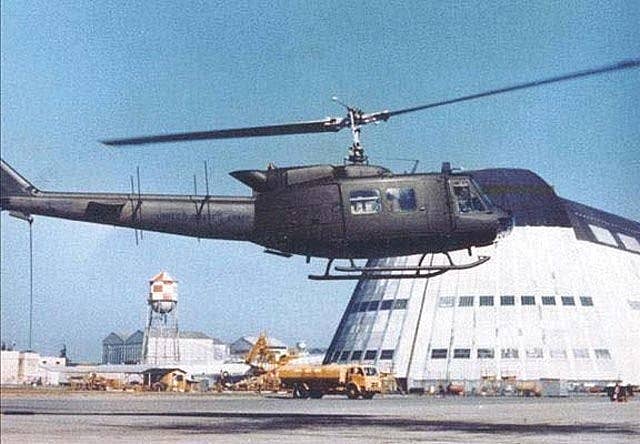
Between 1989 and 1990, work began on the Advanced Quick Fix system, which was originally supposed to go on another UH-60A variant, known as the EH-60C. The Army eventually decided to install it on a modified UH-60L, taking advantage of that variant’s more powerful engines. This became the EH-60L. This is not to be confused with EUH-60L helicopters configured as airborne command posts. The Army did not ultimately pursue the Advanced Quick Fix system, and the helicopter to go with it, on a widespread basis, a fate that befell many U.S. military programs in development right around the collapse of the Soviet Union in 1991.
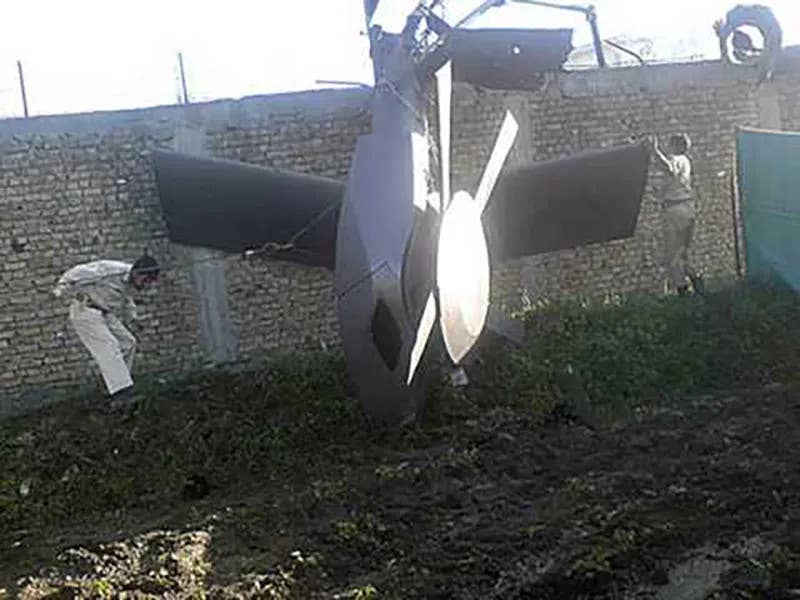
It’s possible that there might have been some confusion as to how far work on stealthy modifications to the Black Hawk had progressed by time of the historic raid. The helicopters were an extremely well-kept secret at the time, one that we would have likely never learned about if the crash hadn’t occurred. Pentagon officials could have misconstrued older tests with more basic kits with a far more elaborate configuration used on the raid.
There is also a possibility that the Army may have been interested in developing a stealthy kit for more general use on its Black Hawks and this was one rendition of such a solution. Adding these features to the EH-60 variants specifically could have been a more concerted effort, as well. A decreased radar signature could help those platforms get close to their targets without detection and then jam them, creating paths for non-stealthy helicopters, as well as fixed-wing aircraft, to follow through.
A kit that could be added and removed from any Black Hawk variant, as necessary, would have been a good way to prevent any unnecessary exposure of the capability during routine operations. Any degradation in performance would not have been permanent, either, allowing the helicopters to fly in a normal configuration the rest of the time.
Finally, we have to address the big question outstanding: could these modifications be the same as those used on the Bin Laden raid helicopters? Clearly it didn’t have anywhere near the same treatment to its tail. Could a kit exists that uses these forward elements, or very similar ones, with the addition of a far more elaborate tail assembly to reduce acoustic signature as well? That is possible, but at this point, our best guess is that this was an evolutionary stepping stone, or an earlier iteration, of what would eventually lead to the now-famous, but never seen ‘Stealth Hawks.’ Still, nobody who isn’t forbidden to discuss it on the record really knows for sure.
In the past, The War Zone has been told that the Stealth Hawks used a MH-60 for their base platform, but an outer composite body was specifically built by Sikorsky to accommodate it, making it a far more elaborate and permanent application. We still have not been able to corroborate these claims. In addition, it is stated that newer and even more complex generations of the Stealth Hawks were built following the Bin Laden raid and are in service now.
It’s amazing to think that it has been nearly a decade after the daring mission into Abbottabad went down, yet we still don’t have any additional official information about the helicopters used nor a single spotting of a similar platform. Maybe the best description of the aircraft from someone who actually took part in Operation Neptune Spear came from Robert O’Neil, who is often referred to controversially as ‘the man who killed Osama Bin Laden.’ He recounts the following in the weeks leading up to the raid:
When we got to Nevada a few days later, where the team trained on another full-scale compound model, but this one crudely fashioned from shipping containers, we turned the corner, saw the helos we’d actually use, and I started laughing. I told the guys, “The odds just changed. There’s a 90 percent chance we’ll survive.” They asked why. I said, “I didn’t know they were sending us to war on a fucking Decepticon.”
Now, thanks to this image, we finally have some hard evidence of what at least one rendition of a ‘Stealth Hawk’ actually looked like and Decepticon certainly fits the bill.
Soucre: fancy4go.com
